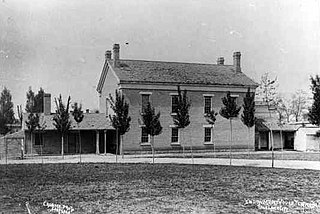
In Mormonism, the endowment is a two-part ordinance (ceremony) designed for participants to become kings, queens, priests, and priestesses in the afterlife. As part of the first ceremony, participants take part in a scripted reenactment of the Biblical creation and fall of Adam and Eve. The ceremony includes a symbolic washing and anointing, and receipt of a "new name" which they are not to reveal to others except at a certain part in the ceremony, and the receipt of the temple garment, which Mormons then are expected to wear under their clothing day and night throughout their life. Participants are taught symbolic gestures and passwords considered necessary to pass by angels guarding the way to heaven, and are instructed not to reveal them to others. As practiced today in the Church of Jesus Christ of Latter-day Saints, the endowment also consists of a series of covenants that participants make, such as a covenant of consecration to the LDS Church. All LDS Church members who choose to serve as missionaries or participate in a celestial marriage in a temple must first complete the first endowment ceremony.
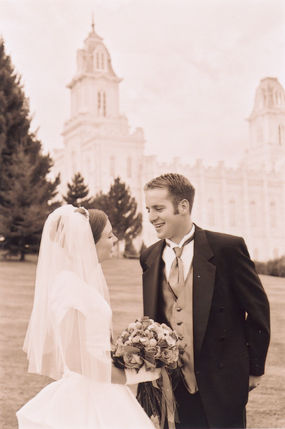
Sealing is an ordinance (ritual) performed in Latter Day Saint temples by a person holding the sealing authority. The purpose of this ordinance is to seal familial relationships, making possible the existence of family relationships throughout eternity. Sealings are typically performed as marriages or as sealing of children to parents. They were performed prior to the death of Joseph Smith, and are currently performed in the largest of the faiths that came from the movement, The Church of Jesus Christ of Latter-day Saints. LDS Church teachings place great importance on the specific authority required to perform these sealings. Church doctrine teaches that this authority, called the priesthood, corresponds to that given to Saint Peter in Matthew 16:19.

In the Latter Day Saint movement, the term ordinance is used to refer to sacred rites and ceremonies that have spiritual and symbolic meanings and act as a means of conveying divine grace. Ordinances are physical acts which signify or symbolize an underlying spiritual act; for some ordinances, the spiritual act is the finalization of a covenant between the ordinance recipient and God.
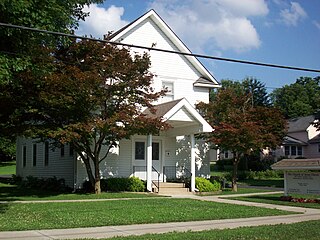

The Salt Lake Temple is a temple of the Church of Jesus Christ of Latter-day Saints on Temple Square in Salt Lake City, Utah, United States. At 253,015 square feet (23,505.9 m2), it is the largest Latter-day Saint temple by floor area. Dedicated in 1893, it is the sixth temple completed by the church, requiring 40 years to complete, and the fourth temple built since the Mormon exodus from Nauvoo, Illinois, in 1846. The temple was closed in December 2019 for a general remodelling and seismic renovations, which were initially estimated to take approximately four years. Subsequent updates extended the estimated completion to 2026, for a total renovation timeline lasting an anticipated six or seven years.

The Nauvoo Illinois Temple is the 113th dedicated temple of the Church of Jesus Christ of Latter-day Saints. It is the third such temple that has been built in Illinois.
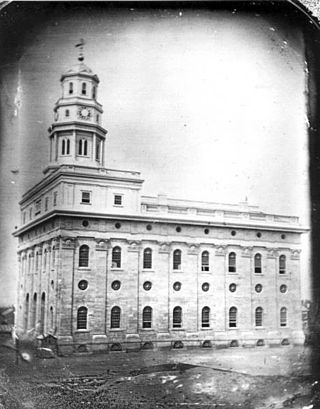
The Nauvoo Temple was the second temple constructed by the Church of Jesus Christ of Latter Day Saints. The church's first temple was completed in Kirtland, Ohio, United States, in 1836. When the main body of the church was forced out of Nauvoo, Illinois, in the winter of 1846, the church attempted to sell the building, finally succeeding in 1848. The building was damaged by fire and a tornado before being demolished.

In the Latter Day Saint movement, a temple is a building dedicated to being a house of God and is reserved for special forms of worship. A temple differs from a church meetinghouse, which is used for weekly worship services. Temples have been a significant part of the Latter Day Saint movement since early in its inception. Today, temples are operated by several Latter Day Saint denominations. The most prolific builder of temples of the Latter Day Saint movement is the Church of Jesus Christ of Latter-day Saints. The LDS Church has 335 temples in various phases, which includes 182 dedicated temples, 54 currently under construction, and 99 others announced. Several others within the movement have built or attempted to build temples. The Community of Christ operates two temples in the United States, which are open to the public and are used for worship services, performances, and religious education. Other denominations with temples are the Apostolic United Brethren, the Church of Christ, the Fundamentalist Church of Jesus Christ of Latter-Day Saints, and the Righteous Branch of the Church of Jesus Christ of Latter-day Saints.
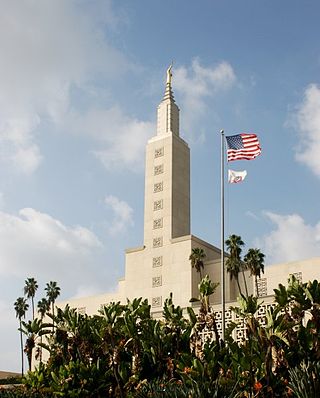
The Los Angeles California Temple, the tenth operating and the second-largest temple operated by the Church of Jesus Christ of Latter-day Saints, is on Santa Monica Boulevard in the Westwood district of Los Angeles, California, United States.
In temples of the Church of Jesus Christ of Latter-day Saints, an ordinance room is a room where the ceremony known as the Endowment is administered, as well as other ordinances such as Sealings. Some temples perform a progressive-style ordinance where patrons move from room to room, each room representing a progression of mankind: the Creation room, representing the Genesis creation story; the Garden room represents the Garden of Eden where Adam and Eve lived prior to the fall of man; the World room, where Adam and Eve lived after the fall; the Terrestrial room; and the Celestial room representing the Celestial Kingdom of God, or more commonly, heaven. There is also an additional ordinance room, the Sealing room, and at least one temple has a Holy of Holies. These two rooms are reserved for the administration of ordinances beyond the Endowment. The Holy of Holies is representative of that talked about when the temple is discussed in the bible.

The St. George Utah Temple is a temple of the Church of Jesus Christ of Latter-day Saints in St. George, Utah. Completed in 1877, it was the church's third temple completed, but the first in Utah, following the migration west of members from Nauvoo, Illinois, following the death of the church's founder, Joseph Smith.

The Atlanta Georgia Temple of the Church of Jesus Christ of Latter-day Saints was the first temple built by the church in the Southeastern United States and the second temple east of the Mississippi River since 1846. Members of the church consider it a literal "house of God" comparable to the ancient Israelite temple where, as recorded in Bible, God spoke with Samuel. Emphasizing this belief, the building's façade bears the inscription "Holiness to the Lord – The House of the Lord."

The Spokane Washington Temple is the 59th operating temple of the Church of Jesus Christ of Latter-day Saints.
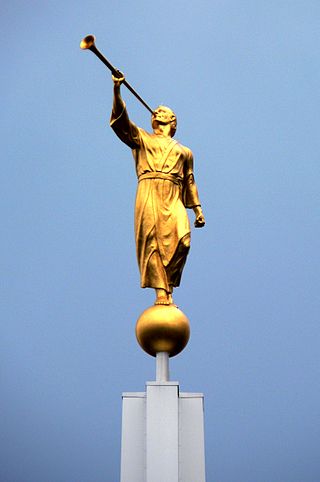
Symbolism in the Church of Jesus Christ of Latter-day Saints is the process whereby objects or actions have been invested with an inner meaning expressing church ideas. The Church of Jesus Christ of Latter-day Saints and its membership have adopted a number of symbols that differ from those typically used in Christianity.
Worship services of the Church of Jesus Christ of Latter-day Saints include weekly services, held in meetinghouses on Sundays, in geographically based religious units. Once per month, this weekly service is a fast and testimony meeting. Twice each year, the LDS Church holds a worldwide general conference. LDS Church adherents also worship in temples, which are open only to members in good standing.

On December 27, 1832, two years after the organization of the Church of Christ, the movement's founder, Joseph Smith, stated he received a revelation that called upon church members to restore the practice of temple worship. The Latter Day Saints in Kirtland, Ohio were commanded to:
"Establish a house, even a house of prayer, a house of fasting, a house of faith, a house of learning, a house of glory, a house of order, a house of God."
The Rome Italy Temple is a temple of the Church of Jesus Christ of Latter-day Saints in Rome, Italy. The temple serves church members in Italy, as well as Malta, Greece, Cyprus, Albania, and parts of Romania. Thomas S. Monson, the LDS Church's president, initially announced the temple in 2008, a groundbreaking took place in 2010, and the temple opened after its dedication in 2019.

In the Church of Jesus Christ of Latter-day Saints, a temple is a building dedicated to be a House of the Lord. Temples are considered by church members to be the most sacred structures on earth.

The following outline is provided as an overview of and a topical guide to the Church of Jesus Christ of Latter-day Saints.
















